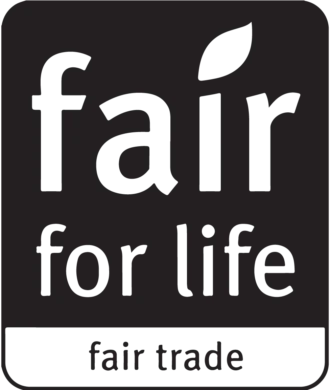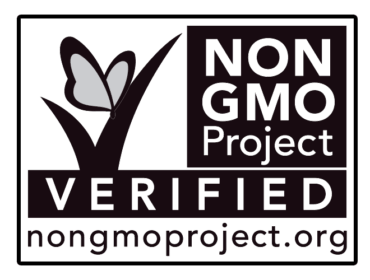This article is intended for informational purposes only and does not constitute medical advice. Check out Lisa Bronner’s original article 12 Personal Care Ingredients to Avoid and visit Going Green for further reading on body and home care tips.
A number of toxic chemicals are found in common, everyday home and body care products that can cause health issues. Learn which ones to avoid when buying for you and your family.
Table of Contents
- Common Toxic Ingredients
- Body Care Toxins to Avoid
- Label Red Flags for Home Care Products
- Common Laundry Toxins
- What to Use Instead
When it comes to health matters, the topic of food toxins we should avoid tends to generate much discourse. However, the same isn’t necessarily true for the products we use on our bodies and in our homes. It should: many of the products we put on our skin, the body’s largest organ, get absorbed into our bodies. As with body care products, toxins found in common cleaners can also find their way into our bodies.
Common Toxic Ingredients
- Phthalates: Research has shown this toxin to be a hormone disruptor that can lead to reproductive issues, especially for women. It’s commonly found in shampoos, body washes, and household cleaning products. Unfortunately, companies aren’t required to disclose if their product has phthalates in it. As a general rule, if the word “fragrance” is on the label and it isn’t derived from essential oils or natural sources, it possibly contains phthalates.
- Triclosan: An antibacterial and antifungal agent commonly found in detergents, hand soaps, and several products with the “antibacterial” label. When absorbed into the skin, it can cause dermatitis and increased allergic reactions. Found mostly in liquid dishwashing detergents and products labeled “antibacterial.”
- Perchloroethylene (PERC): This is usually found in dry-cleaning products and in heavy-duty carpet cleaners. It’s known to cause skin and eye irritation, as well as damage to the liver and respiratory system.
- Quaternary Ammonium Compounds (quats): Used for killing bacteria, research has found they can disrupt important cellular pathways.
- 2-Butoxyethanol: Found in multi-purpose cleaners, paint thinners, and more, this toxin harms the skin, eyes, kidneys, and blood.
Body Care Toxins to Avoid
- Parabens: These are used to extend the shelf life of a product. However, this chemical interferes with your endocrine system, which regulates your hormones. They’re found in cosmetics, hair products, deodorants, and even baby products. On a label, parabens can go by listed as methylparaben, propylparaben, butylparaben, or ethylparaben.
- Synthetic Dyes and Fragrances: Widely found in air fresheners and products that use the term “fragrances.” These are often produced from petroleum and have been linked to certain types of cancers. They can also worsen any preexisting allergies or respiratory issues. These shouldn’t be confused with natural fragrances that come from essential oils.
- Synthetic Preservatives: Unlike natural preservatives like vitamin E and citric acid, synthetic preservatives such as formaldehyde are found in many skin and beauty products, which can disregulate your hormonal balance.
Label “Red Flags” for Home Care Products
Many of the toxins listed above are also found in common household cleaners. Household cleaners also often display statements that indicate the product likely contains toxic ingredients. Be on the lookout for these label red flags:
- Chemical Caution/Warning: If you see this disclaimer on a cleaning product, you can be pretty sure that it contains chemicals that are toxic to you and your home.
- Rubber Glove or Face Mask Recommendation
- Products That Require Ventilation to Use
- Hazardous Waste Removal Instructions
- Flammable Warning
- Bleach: This ingredient can cause cell damage and lead to many illnesses.
- Petroleum: Look out for ingredients that end in “ol” or “ene”. These petroleum-based ingredients are made from coal tar, a known carcinogen.
Common Laundry Toxins
Check the label and avoid products that contain these toxins:
- Detergents and fabric softeners containing synthetic fragrances: These usually are loaded with phthalates.
- Unscented Detergents Containing Masking Agents: The chemicals in many laundry detergents can cause them to have an unpleasant smell. If a label includes several toxic chemicals while also claiming to be unscented, it can actually contain more toxins due to the presence of masking agents used to remove the scent.
- Synthetic Brighteners: Brighteners cause irritation to the skin and are destructive to marine life.
- Bleach: Bleach is responsible for more poisonings than any other chemical and can be harmful if inhaled in large amounts.
What to Use Instead
While it might seem overwhelming at first, choosing safe and effective non-toxic cleaning products for home and body can be simple and fun. Just be aware of common greenwashing tactics in your search, since many companies use vague, misleading terms like “eco-friendly”, “all-natural”, and “botanical.” To make sure you’re choosing the best options for you and your family, read a product’s ingredient list to avoid the toxins listed above, and look for products that contain these labels and certifications:
The Cruelty-Free seal (the Leaping Bunny logo)
EPA’s Safer Choice Certification

Independent third-party testing
If you’re looking to invest in safer, healthier body and home care products, check out Dr. Bronner’s organic, vegan and fair trade certified collections!
Sources
https://www.ewg.org/the-toxic-twelve-chemicals-and-contaminants-in-cosmetics
https://www.safecosmetics.org/chemicals/
https://www.webmd.com/beauty/features/harmful-chemicals-in-your-cosmetics
https://www.lung.org/clean-air/at-home/indoor-air-pollutants/cleaning-supplies-household-chem
https://www.ewg.org/guides/cleaners/content/cleaners_and_health/




